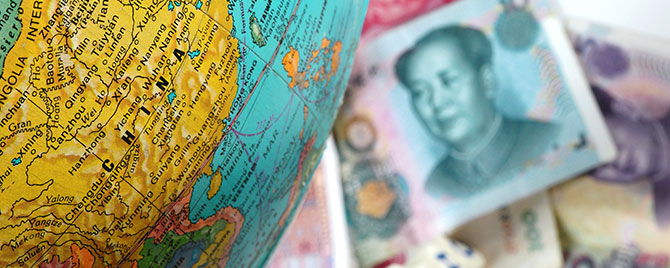Pacific Exchange
-
Not All NPLs Are Created Equal
Credit quality is a key aspect of an institution’s overall soundness. Arguably the most widely used measure for gauging the quality of an institution’s loan portfolio is the reported nonperforming loan (NPL) ratio. However, not all countries use the same definition and therefore NPL ratios are not necessarily comparable across borders.
-

The ABCs of ASEAN’s Economic and Banking Integration
In 2007, the ten member countries of the Association of Southeast Asian Nations (ASEAN) adopted the goal to achieve economic integration by creating an ASEAN Economic Community (AEC) by year end 2015. The AEC aims to shift ASEAN from ten fragmented economies to a single market of goods, services, and investment together with freer movement […]
-

After the Fall: The Path Forward for China’s Stock Market and Economy
On October 20, 2015 at its Los Angeles branch, the Federal Reserve Bank of San Francisco hosted an Asia Financial Forum entitled After the Fall: The Path Forward for China’s Stock Market and Economy. The event featured Andy Rothman, who spent 20 years in China first as a diplomat and then as an investment strategist. […]
-

Banking on China through Currency Swap Agreements
As China establishes itself as the world’s second largest economy and top trading nation, its currency, the renminbi (RMB), is also gaining popularity around the world. According to the People’s Bank of China’s 2015 Renminbi Internationalization Report, the RMB was the world’s 5th most used payment currency, the 2nd most used trade finance currency, and […]
-

Capital Flows Go into Reverse in Asia’s Financial Hubs
While much of the world has seen a retrenchment in international lending following the financial crisis, Asian banks have dramatically increased their international exposure. Even more striking is that in Asia’s financial centers, Singapore and Hong Kong, the increase in international activity has been accompanied by a change in direction of capital flows. Both economies have now become large net lenders to emerging Asia, a change that reflects larger underlying trends in the region.
-

Capital Flows Go into Reverse in Asia’s Financial Hubs
While much of the world has seen a retrenchment in international lending following the financial crisis, Asian banks have dramatically increased their international exposure. Even more striking is that in Asia’s financial centers, Singapore and Hong Kong, the increase in international activity has been accompanied by a change in direction of capital flows. Both economies have now become large net lenders to emerging Asia, a change that reflects larger underlying trends in the region.
-

Developing Local Currency Bond Markets Can Help Insulate Asia from Volatility
Many Asian borrowers increased their dollar-denominated debt in recent years amid the extraordinarily low rate environment. Recent volatility has been characterized by capital outflows from Asian economies where such debt accumulated. While emerging Asia remains vulnerable to further capital flight with a majority of external debt in foreign currency, its bond issuances are largely in local currency. Further deepening of bond markets combined with increased local currency debt can insulate emerging Asia from further volatility.
-

The Speed and Trajectory of Household Debt in South Korea
Similar to many countries in Asia, Korea’s household debt increased considerably after the global financial crisis. As of year-end 2014, household debt as a percentage of GDP was 76% and increased 15 percentage points since 2008. Concerns have risen as the growth rate of household debt has exceeded that of income and the broader economy for a prolonged period.
-

China Sets the Rules for Internet Finance
Internet finance in China is growing rapidly and has the potential to significantly alter the structure of the financial system. New firms, many of which are private, are entering China’s mostly state-controlled financial system and offering innovative products and services. To adapt to these changes, Chinese regulators have issued a series of new guidelines aimed […]
-

Why We Shouldn’t Invoke Japan’s “Lost Decade” as China’s Future
China’s transition to a new period of slower growth naturally draws comparison to other countries’ historical development. Given its recent experience with rapid credit expansion, build-up in real estate, and stock market volatility, some observers wonder whether China faces a “lost decade” like the one Japan experienced in the 1990s. This comparison is inappropriate, however, and contributes to a misunderstanding of the challenges China does face and a misremembering those Japan encountered a generation earlier.